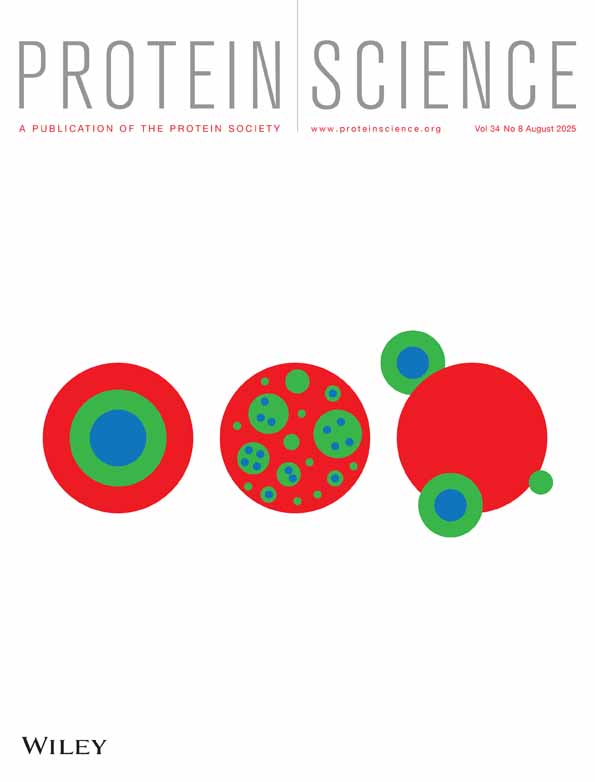Dissecting the energetics of an antibody-antigen interface by alanine shaving and molecular grafting
Abstract
Alanine-scanning mutagenesis on human growth hormone (hGH) identified 5 primary determinants (Arg 8, Asn 12, Arg 16, Asp 112, and Asp 116) for binding to a monoclonal antibody (MAb 3) (Jin L, Fendly BM, Wells JA, 1992, J Mol Biol 226:851–865). To further analyze the energetic importance of residues surrounding these five, we mutated all neighboring residues to alanine in groups of 7–16 (a procedure we call alanine shaving). Even the most extremely mutated variant, with 16 alanine substitutions, caused less than a 10-fold reduction in binding affinity to MAb3. By comparison, mutating any 1 of the 5 primary determinants to alanine caused a 6- to >500-fold reduction in affinity. Replacing any of the 4 charged residues (Arg 8, Arg 16, Asp 112, and Asp 116) with a homologous residue (i.e., Arg to Lys or Asp to Glu) caused nearly as large a reduction in affinity as the corresponding alanine replacement. It was possible to graft the 5 primary binding determinants onto a nonbinding homologue of hGH, human placental lactogen (hPL), which has 86% sequence identity to hGH. The grafted hPL mutant bound 10-fold less tightly than hGH to MAb3 but bound as well as hGH when 2 additional framework mutations were introduced. Attempts to recover binding affinity by grafting the MAb3 epitope onto more distantly related scaffolds having a similar 4-helix bundle motif, such as human prolactin (23% sequence identity) or granulocyte colony-stimulating factor, were unsuccessful. These studies show that only a small number of side chains on hGH confers tight binding affinity to MAb3 and that substituting or transplanting them onto another scaffold has narrow design tolerances.




